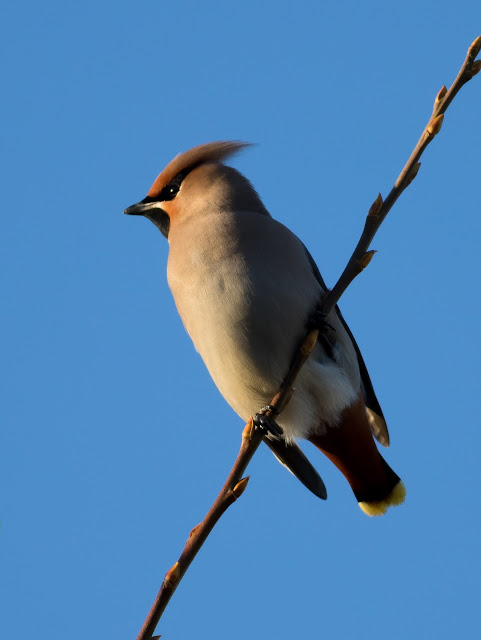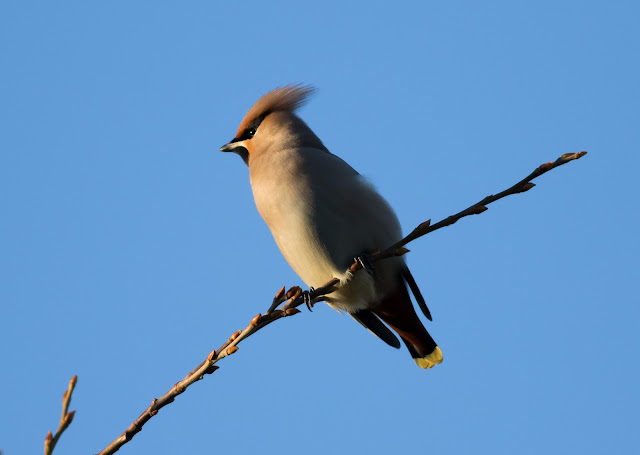Waxwings; a true herald of
winter and one of the most superior birds to grace our shores during the colder
months. Providing a bright spark of beauty and elegance that is guaranteed to
perk up even the most damp and dark mid-winter days, these charismatic
favourites have swept across the nation’s berry bushes in a frantic feeding
frenzy akin to a swarm of locusts – no berry has been left unscathed and it
seems no town has been without their very own wax-tipped winged wonders.
With spectacular eye patterns
to rival the make-up of even the most stylish of Geishas, these glamorous
punk-haired visitors seem to time their sporadic stopovers to Britain just
right, leaving the perfect gap between invasion years in order to truly make an
impact when they arrive.
With a Waxwing irruption of
impressive proportions taking place this winter, it was only natural that we
would eventually stumble across these splendid Scandinavian visitors for
ourselves, and along with going to see several known birds, I was lucky enough
to find three different flocks myself over the course of the season.
Having been surprised by our
first group whilst walking around Brickfields Pond in Rhyl with Alex just after
Christmas, I located further individuals elsewhere in Rhyl a couple of weeks
later on the Dyserth Road, followed by a surprising and rather late count of
over 50 birds in my hometown of Northwich while walking home from work last
Monday.
Hearing their distinctive high
pitched tinkle-bell trilling, I was amazed to look up and find a vast flock
staring back at me, erupting from the playground trees and swirling overhead in
a whirlwind of reds and yellows before disappearing over the nearby buildings. Having
been desperately watching out of my garden window every winter in the hopes of
spotting this most sought after of visitors joining the usual Redwings and
Fieldfares avidly devouring the frost coated apples on the lawn, finding my
very own local flock was the next best thing.
The sheer abundance of
Waxwings over the past few months has inevitably resulted in fantastic
photographic opportunities to capture the incredible beauty of these winter
visitors, and the flock in Rhyl proved to be particularly photogenic as they
flitted through patches of trees in a nearby housing estate.
With spring marching on and
the weather getting decidedly warmer, it’s now only a matter of time before our
Scandinavian beauties depart for another couple of years, taking with them
their charming wind chime-like trills and flashy wing flicks, leaving a nation
of deserted, stripped bare berry bushes in their wake.













